Dexter Sulphite Mill Explosion of January 18, 1903
Constructed in 1837, the Dexter Sulphite Mill was originally a woolen mill erected by the Jefferson Woolen Co and operated as such through the 1860s. It would have a long run of production as a sulphite mill from c.1890 to its closing in 1953. Unfortunately, a string of accidents, including the digester room explosion in 1903 which resulted in two fatalities, one directly and the other indirectly, would plague the sulphite mill’s early years along with a number of other accidents.
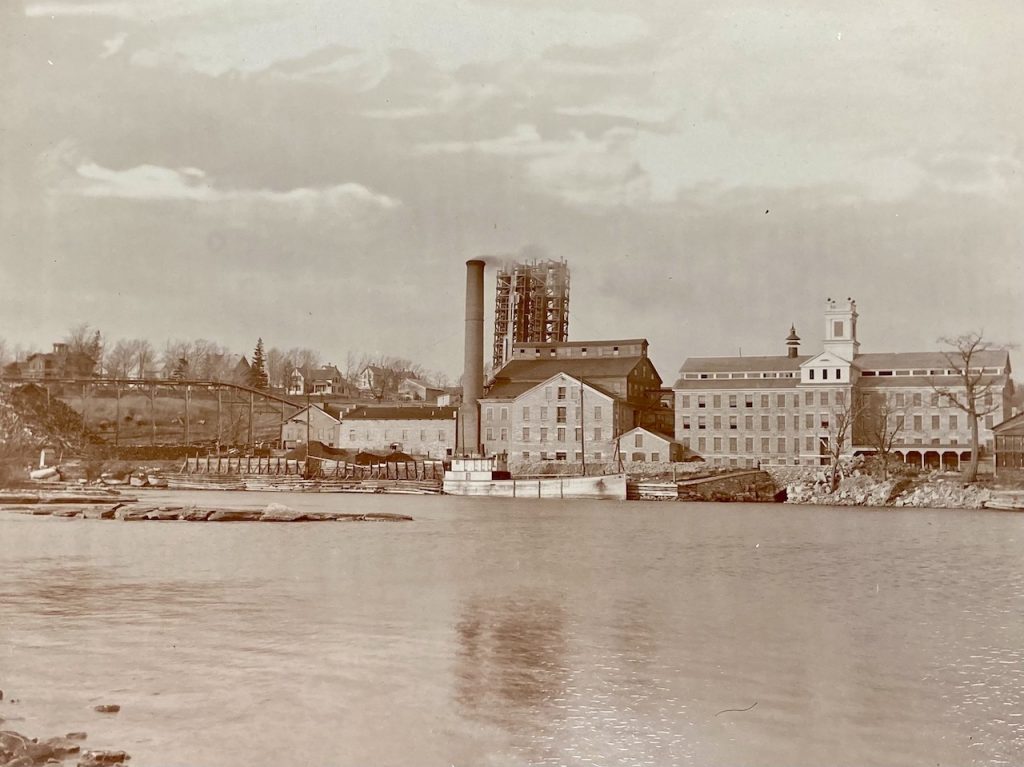
In September of 1887, the Watertown Daily Times reported the possibility of another paper mill in Dexter–
It is possible that the village of Dexter will soon boast of having the largest paper mills on Black River. Dr. Campbell of New York owner of the old woolen mill property in that village, think of using the power for paper making, and the talks that a manufacturing company will be formed in which himself and Outterson Bros., of Brownville, will be the principal stockholders.
The mill is located so that it will have the benefit of lake navigation, but if it is put in operation it is said the R. W. & O. will build a branch to Dexter. The people of Dexter hope the paper mill will be an assured fact, though a woolen mill would be of much more benefit to the town.
After the Sulphite Co. was formed, several new buildings were erected including the acid tower and sulphite furnace in 1889. As the Dexter Sulphite Mill became operational, it was evident safety wasn’t a primary concern by the number of serious accidents that were occurring.
As mentioned in successive paragraphs in the June 10, 1890 edition of the Watertown Daily Times, Albert Marsh backed into one of the saws and had one of his limbs cut in several places. Another employee, Will Brown, was mentioned as having lost a thumb in the following paragraph.
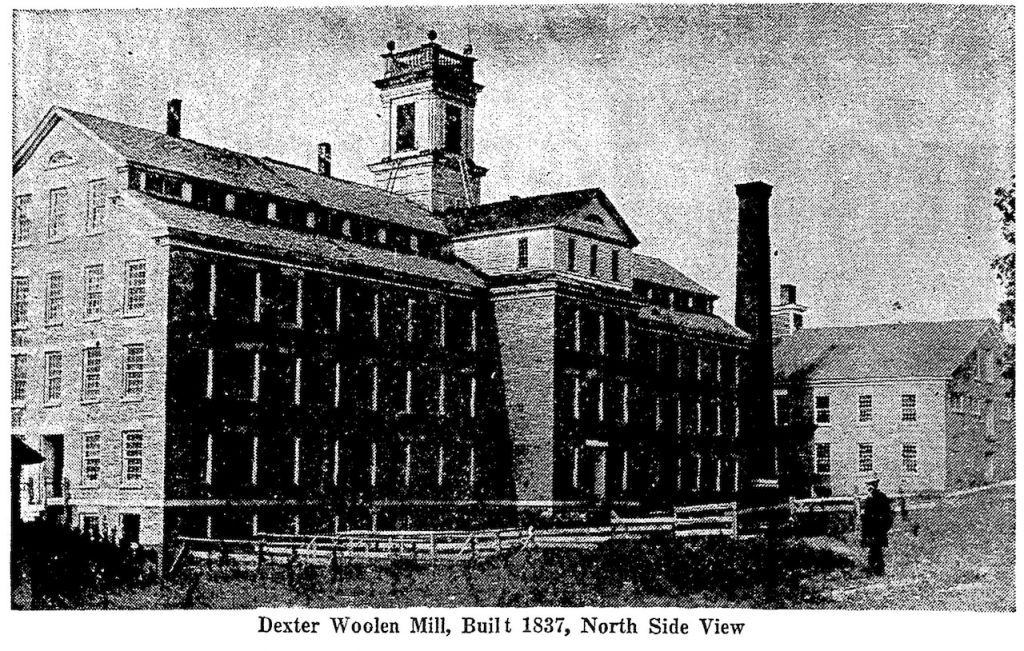
A few years later, the graphic account of Fred Lamon having his left hand caught between two rollers of a machine was reported by the Watertown Daily Times. Unable to free his hand, it was drawn between the rollers up to between his wrist and elbow, “horribly crushing the bones.” Five or six weeks later, it was determined his arm would require amputation. After that, it was discovered his blood vessels had been destroyed in the wrist and gangrene had set in.
In 1891, one of the Remington Paper Mills, also a sulphite mill, would have a digester explode, the force blowing an employee 20 feet away. Terribly scalded by sulphuric acid, he would die three days later. There were countless accidents in Dexter and around various other mills in the years leading up to January 18, 1903 digester explosion at the Dexter Sulphite Mill, but unfortunately, there weren’t anywhere near the same protocols for occupational safety as there are today which seemed to make the accident inevitable.
On January 19th, 1903, the headline and story in the Watertown Daily Times read–
EXPLOSION
A Sulphite Digester Wrecks a Mill
DEXTER’S DISASTER
The Sulphite Company’s Plant Suffers Heavy Damage
GEO. HUNT’S TERRIBLE DEATH
A terrific explosion occurred in one of the Dexter Sulphite Pulp & Paper company’s digesters at that village at 6:45 yesterday morning, which resulted in the instant death of George Hunt, an employee, caused damage that appears this morning to approximate $100,000, and will throw from 75 to 100 men temporarily out of work, for the entire digester system, and in fact the whole plant, must be thoroughly overhauled before work can resume. It will be late spring, early summer before the plant can be operated again.
The article would go on to note that, normally, on a weekday, there would have been upwards of 25 men present in the room and the difficulty seeing how any of them could have survived. As it were, only George Hunt was present in the room that Sunday morning. As the article continued, it did mention a witness–
The only employee of the few about the building who is found to have actually seen the explosion is John Loose. He was standing about 150 feet away from the mill when there was a thunderous roar, and up into the air went the roof of the digester building, together with the fragments of the exploded digester, and, as appeared afterward, the body of the unfortunate Hunt, though in the flying debris, Losie did not distinguish the body of his co-worker at the time, which was thrown fully 25 feet in the air and far to one side, falling upon the roof of the engine too, 50 feet away. It was horribly mangled.
It was said the village, which had grown significantly in recent years, was instantly brought in force to the scene to see the building a complete wreck. The article would later mention the loss may be $300,000, and that two other remaining digesters were ruined overnight from the cold and cracked badly, still having been very hot inside. Chips of debris were also said to have been found clear across the river.
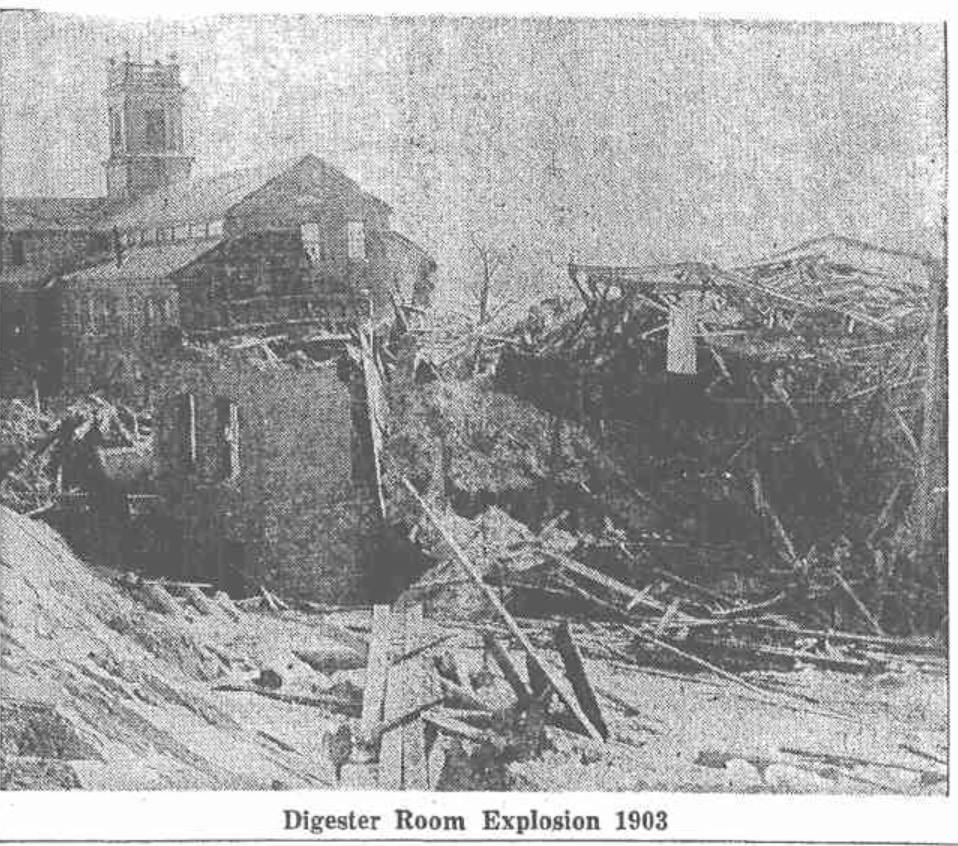
The second death, indirectly attributed to the explosion, was that of William Dillenbeck who went to the Dexter Sulphite Mill to view the wreck, only to return home and die in his chair from what was attributed as “death from nervous shock.” According to the Daily Times–
The disastrous explosion at the plant of the Dexter Sulphite Pulp and Paper Co. at Dexter yesterday morning indirectly caused a second death, that of William Dillenbeck, an octogenarian and one of the oldest residents of the village.
Mr. Dillenback, who was a hale and hearty old man and, to the knowledge of friends in this city, never had a day’s serious illness in his life, walked from his home a short distance down to the wrecked mill yesterday morning immediately after the explosion and surveyed the scene of ruin. He walked back home, lighted his pipe, seated himself in a chair and fell forward, dead. It is supposed that the excitement resulting from the explosion overcame Mr. Dillenback and caused his death from heart failure.
Several days after the accident, it was said that the digester was heated too rapidly, resulting in its explosion.
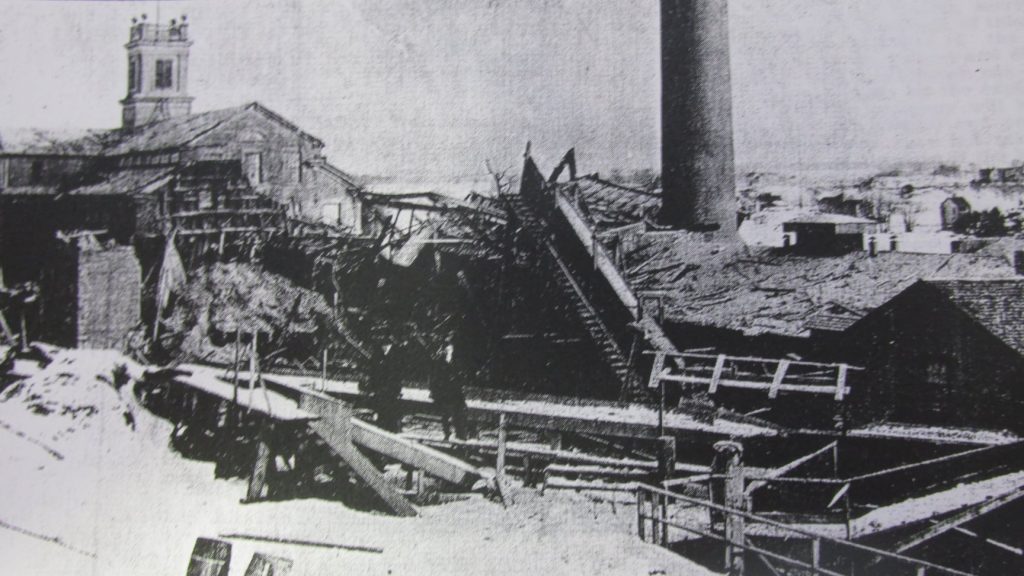
The Dexter Sulphite Mill would start production again later that year and eventually close for good on May 30, 1953, nearly 50 and a half years after the accident. A fire on August 12, 1972, would destroy a good portion of the building’s wooden elements, while as many as three other fires over the course of the following five months, stretching into early 1973, would have the local news suspecting arson. Much of the site would be demolished later that year.
In 1983, a $400,000+ rehabilitation on the abandoned mill would begin, turning a remaining building, constructed in 1880, into the Jefferson County Industrial Development Agency’s foreign trade zone. Known locally as “Miracle on the Hill,” the building is named the Dexter Industrial Center.

Interesting Tidbits
The year the Dexter Sulphite Mill digester room exploded, 1903, also saw construction start on the Roswell P. Flower Memorial Library; the construction of the old stone Jefferson County Office Building on Arsenal Street; the expansion of Immaculate Heart Academy on West Main Street; and the opening of the Electric Tower at Luna Park in Coney Island, inspired by the Electric Tower in the 1901 Pan-American Exposition held in Buffalo, NY.
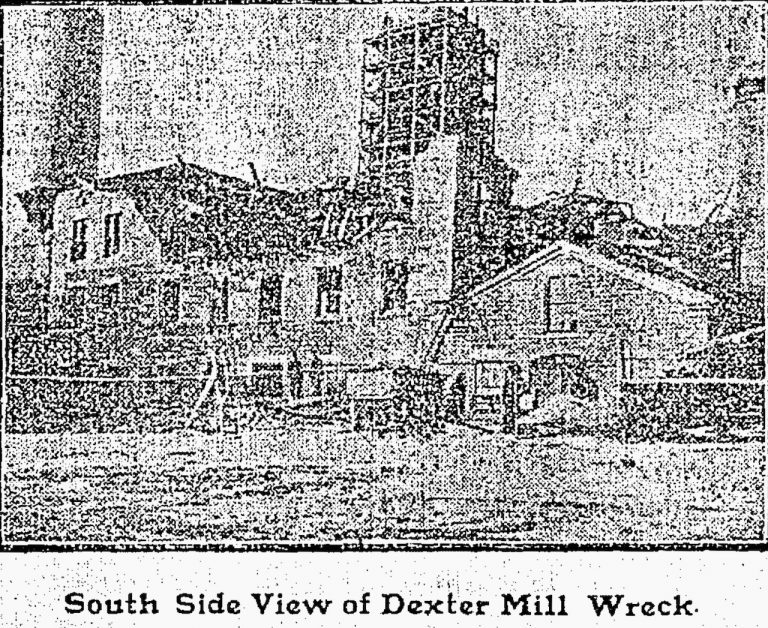



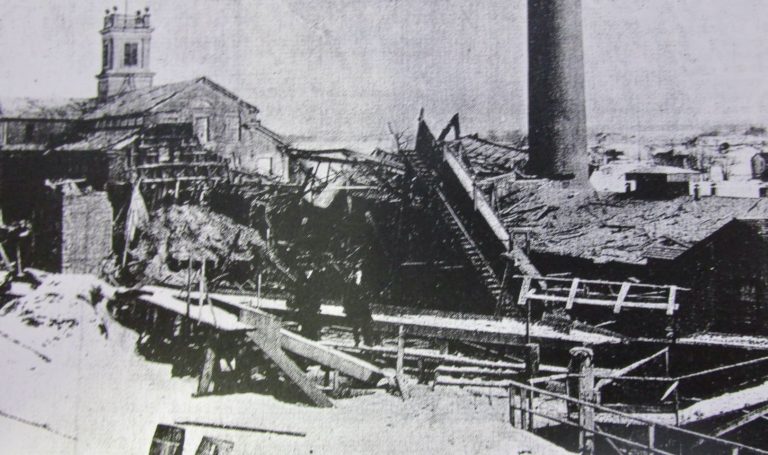

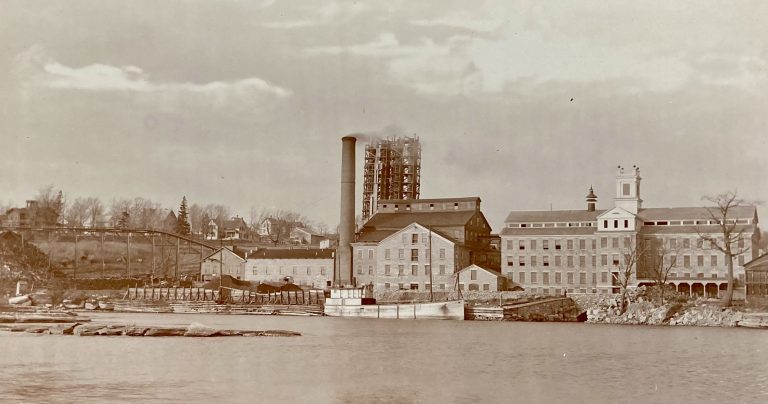



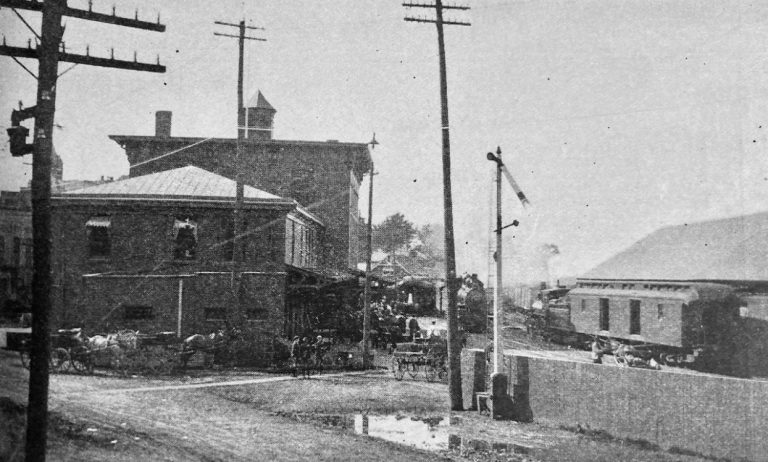



1 Reviews on “Dexter Sulphite Mill Explosion – January 18 1903”
So, what IS sulphite and how is paper made using the sulphite process?
Simple Description: https://www.differencebetween.com/difference-between-kraft-and-sulfite-pulping/
Detailed Description: http://www.paperpulping.com/news/How-much-do-you-know-about-sulfite-pulping.html
I was reading about it a few days ago and wondered why, during that period, sulphite mills were becoming “a thing” considering they seem to take a lot longer to manufacture paper. Not only that, but according to the accident investigation, “normal” procedure was for the digester to reach the desired temperature in a matter of something like 36 hours or so. Whether that was during cold weather wasn’t specified, but evidently they warmed it up too fast.